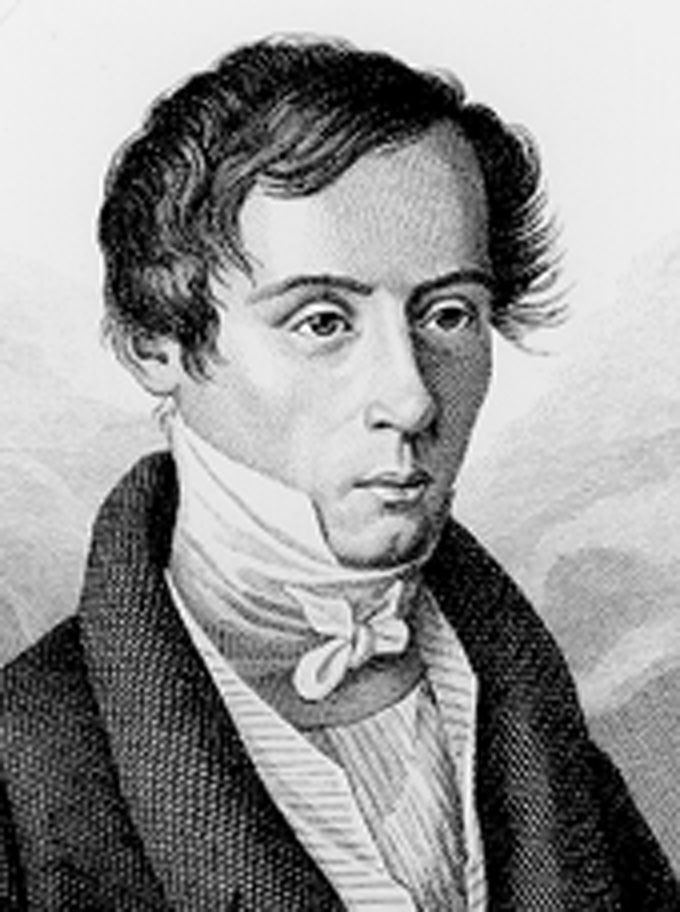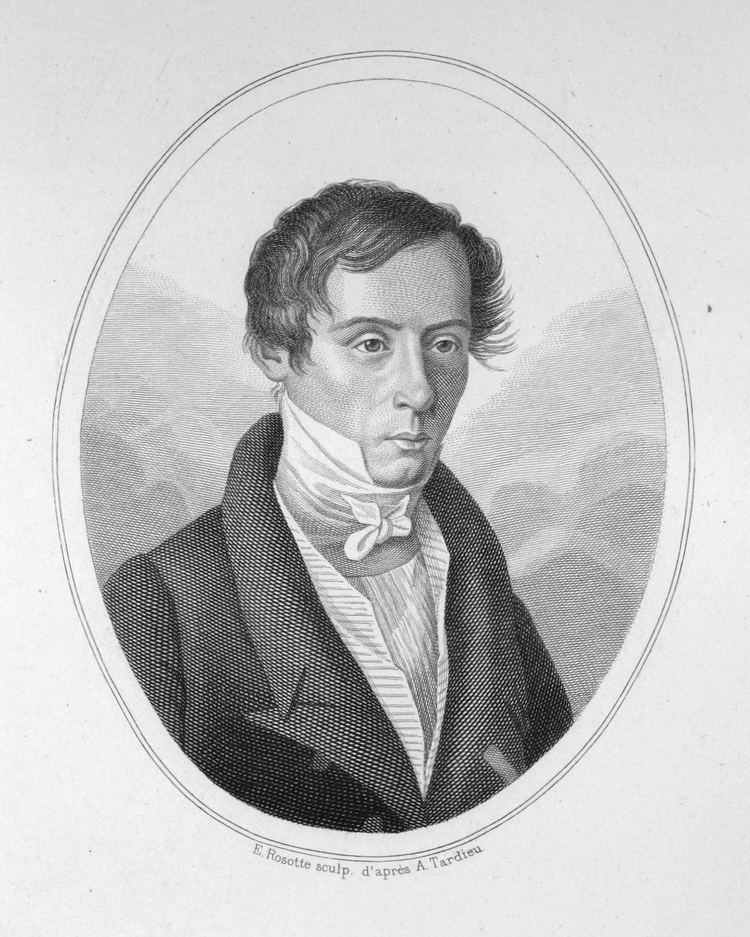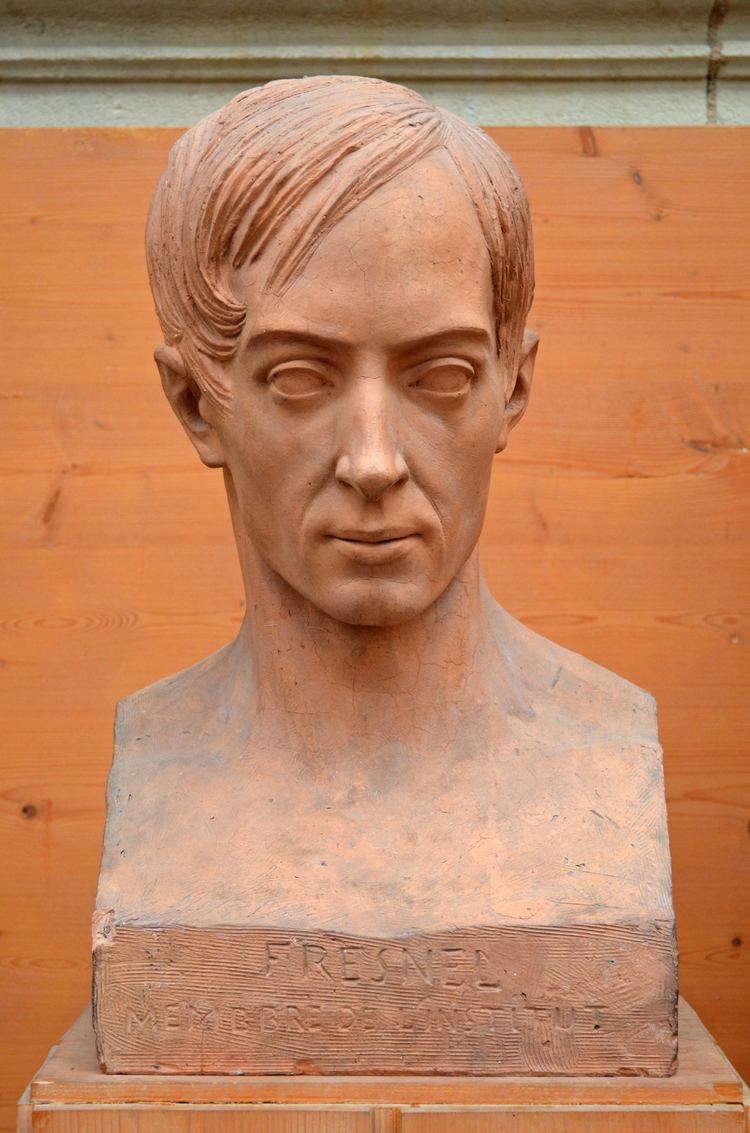Residence France Education Ecole Polytechnique | Role Engineer Nationality French Name Augustin-Jean Fresnel | |
 | ||
Born 10 May 1788Broglie (Eure), Kingdom of France ( 1788-05-10 ) Books The Wave Theory of Light - Memoirs by Huygens, Young and Fresnel Parents Augustine Merimee, Jacques Fresnel Similar People | ||
Augustin jean fresnel
Augustin-Jean Fresnel ( ; [ɔ.ɡy.stɛ̃ ʒɑ̃ fʁɛ.nɛl]; 10 May 1788 – 14 July 1827), was a French engineer and physicist who contributed significantly to the establishment of the theory of wave optics. Fresnel studied the behaviour of light both theoretically and experimentally.
Contents
- Augustin jean fresnel
- Personal life and education
- Career
- Fresnel bright spot
- Polarized light research
- References

He is perhaps best known as the inventor of the Fresnel lens, first adopted in lighthouses while he was a French commissioner of lighthouses, and found in many applications today. His equations on waves and reflectivity, the Fresnel equations, also form the basis for many applications in computer graphics today — for instance, the rendering of water.

Personal life and education

Fresnel was the son of an architect, born at Broglie (in present-day Eure). He received a rigorous Catholic upbringing from his parents, who were involved in the Jansenist movement. His early progress in learning was slow, and he still could not read when he was eight years old. At thirteen he entered the École Centrale in Caen, and at sixteen and a half the École Polytechnique, where he acquitted himself with distinction. From there he went to the École des Ponts et Chaussées.

He made many contributions to the development of the field of optical science. Some of his papers were not printed by the Académie des Sciences until many years after his death. But as he wrote to Young in 1824: in himself "that sensibility, or that vanity, which people call love of glory" had been blunted. "All the compliments," he says, "that I have received from Arago, Laplace and Biot never gave me so much pleasure as the discovery of a theoretic truth, or the confirmation of a calculation by experiment".
Fresnel has been described as a man with interest in religious questions and deep faith in God. As a form of consolation, he took religion very seriously especially during his illness.
He spent much of his life in Paris, and died of tuberculosis at Ville-d'Avray, near Paris. His is one of the 72 names inscribed on the Eiffel Tower. The writer Prosper Mérimée (1803-1870) was his first cousin.
Career
He served as an engineer successively in the departments of Vendée, Drôme and Ille-et-Vilaine; but having supported the Bourbons in 1814 he lost his appointment on Napoleon's return to power. He appears to have begun his research in optics around 1814, when he prepared a paper on the aberration of light, although it was never published. In 1815, on the second restoration of the monarchy, he obtained a post as engineer in Paris.
In 1818 he wrote a treatise on diffraction, for which he received the prize of the Académie des Sciences at Paris the following year. He was the first to construct a special type of lens, now called a Fresnel lens, as a substitute for mirrors in lighthouses. In 1819, he was nominated to be a commissioner of lighthouses. In 1823 he was unanimously elected a member of the academy. In 1825 he became a Fellow of the Royal Society of London. In 1827, the time of his last illness, the Royal Society of London awarded him the Rumford Medal.
His discoveries and mathematical deductions, building on experimental work by Thomas Young, extended the wave theory of light to a large class of optical phenomena, especially, to the double-refraction property of Iceland Spar, or calcite.
In 1817, Young had proposed a small transverse component to light, while yet retaining a far larger longitudinal component. Fresnel, by the year 1821, was able to show by mathematical methods that polarization could be explained only if light was entirely transverse, with no longitudinal vibration whatsoever. He proposed the aether drag hypothesis to explain a lack of variation in astronomical observations. His use of two plane mirrors of metal, forming with each other an angle of nearly 180°, allowed him to avoid the diffraction effects caused (by the apertures) in the experiment of F. M. Grimaldi on interference. This allowed him to conclusively account for the phenomenon of interference in accordance with the wave theory.
Fresnel bright spot
The Fresnel bright spot, also referred to as the "Poisson spot", or the "Spot of Arago", is a bright point that appears at the center of a circular object's shadow due to Fresnel diffraction. The experimental demonstration of the existence of Fresnel's spot, predicted to be a consequence of Fresnel's 1818 wave theory by Poisson, played an key role in the proof of the wave nature of light, and is a common way to demonstrate that light behaves as a wave.
Polarized light research
With François Arago he studied the laws of the interference of polarized rays. He obtained circularly polarized light by means of a rhombus of glass, known as a Fresnel rhomb, having obtuse angles of 126° and acute angles of 54°. The Fresnel–Arago laws are three laws which summarise some of the more important properties of interference between light of different states of polarization. The laws are as follows:
The Fresnel equations describe the behaviour of light when moving between media of differing refractive indices. When light moves from a medium of a given refractive index n1 into a second medium with refractive index n2, both reflection and refraction of the light may occur.
The Fresnel diffraction equation is an approximation of Kirchhoff-Fresnel diffraction that can be applied to the propagation of waves in the near field. It is used to calculate the diffraction pattern created by waves passing through an aperture or around an object, when viewed from relatively close to the object. In contrast the diffraction pattern in the far field region is given by the Fraunhofer diffraction equation.
